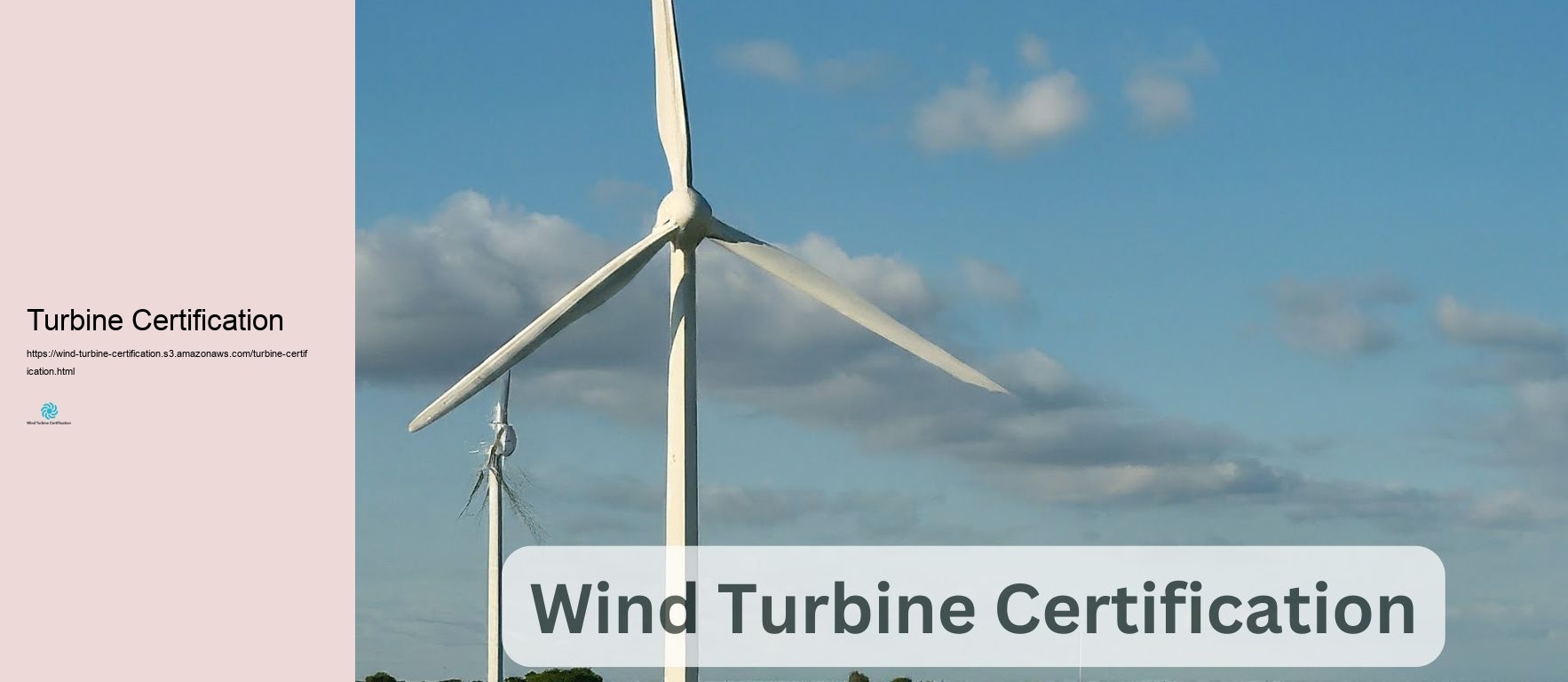

Wind turbine certification is a vital treatment in the wind power field that assurances wind generators meet specific criteria for safety, effectiveness, and stability. This extensive certification procedure includes extensive screening and evaluation of wind turbine styles, parts, and manufacturing processes to validate compliance with around the world criteria and policies. The primary unbiased of wind turbine certification is to give assurance to stakeholders, consisting of job designers, financiers, and governing bodies, that a certain wind turbine version appropriates for its preferred usage and can stand up versus the environmental problems it will absolutely face throughout its practical life time. Certification helps in decreasing risks related to wind power jobs and promotes the basic premium quality and integrity of wind turbine modern-day innovation. There are a number of type of wind turbine accreditations, with kind certification being among the most normal and comprehensive. Kind certification verifies that a particular wind turbine design is made, made, and inspected according to suitable needs and criteria. This procedure generally consists of several examination modules, such as style basis evaluation, wind turbine layout assessment, kind evaluating, creating assessment, and final examination. The design basis assessment analyzes the ecological and useful conditions under which the wind turbine is anticipated to run. This consists of elements such as wind speeds, disruption, temperature level selections, and other site-specific problems. The wind turbine layout analysis checks out the turbine's architectural, mechanical, and electrical parts to warranty they satisfy the required requirements and can withstand the anticipated lots and stresses. Turbine Certification Type screening is a vital component of the certification process, entailing physical tests on a model or producing system of the wind turbine. These examinations review various components of the turbine's performance, including power end result, audio discharges, and safety and security features. Lots dimensions are additionally carried out to confirm the accuracy of the design estimations and simulations. The manufacturing analysis makes sure that the production processes and quality control activities suffice to continually generate wind generators that fulfill the licensed design specifications. This may include producing center evaluations and audits of the manufacturer high quality keeping track of system. In addition to type certification, component certification is also provided for substantial wind turbine aspects such as blades, transmissions, and generators. Element certification adheres to a comparable process to kind certification yet concentrates on private elements instead of the whole turbine system. For small wind generators, which are usually utilized in distributed generation applications, certification processes may be slightly numerous nonetheless still aim to confirm performance, safety and safety and security, and durability. Tiny wind turbine certification generally includes screening to specific requirements developed for smaller sized systems, such as those outlined by the International Electrotechnical Payment(IEC)or nationwide demands companies. Wind ranch certification is an additional crucial element of the wind power market, specifically for enormous tasks. This treatment testimonials the entire wind cattle ranch, including the website problems, turbine feasibility for the certain place, support structures, and electric systems.
supporting the advancement and stability of wind power as a crucial component of the globally renewable resource mix. By providing a standard structure for examining wind turbine innovation, certification aids construct self-esteem among stakeholders and contributes to the total success and sustainability of wind power jobs worldwide.
Obtaining wind turbine certification is a comprehensive treatment made to make sure that wind generators please certain requirements and criteria, guaranteeing their safety and security and safety and security, performance, and dependability. This detailed guide explains the crucial needs for acquiring wind turbine certification, highlighting the importance of each activity in the procedure. Kind certification is an important need for wind generators, confirming that they are designed, manufactured, and reviewed to adhere to particular demands or standards. This module assesses the design anticipations and standards utilized in creating the wind turbine. It assurances that the layout is based on audio engineering principles and meets the needed criteria. This action analyzes the in-depth layout of the wind turbine, including its mechanical, electric, and control systems. It validates that the layout meets the technical demands and market needs. Kind evaluating includes executing physical tests on the wind turbine to confirm its efficiency and protection under countless operating problems. This consists of evaluating for architectural security, electrical performance, and noise degrees. This component analyzes the producing treatment to warranty that it abides by the accredited design paperwork. It contains assessments of the manufacturing center and quality control procedures. The final examination combines all previous analyses to validate that the wind turbine fulfills all certification demands. This phase entails a full testimonial of all papers and examination results. Optional analysis modules may consist of structure layout assessment, framework production evaluation, and kind qualities measurements. These added examinations give added assurance of the turbine's performance and security. Element certification is just as vital, as it confirms that significant components of a wind turbine, such as blades or significant transmissions, satisfy certain criteria and technological needs. The process for component certification. Turbine certification commonly adheres to international requirements such as IEC 61400-22 and IEC 61400-1. These requirements give a structure for making sure that wind wind turbines are produced and checked to satisfy globally security and safety and performance requirements. Compliance with these needs is vital for obtaining certification and seeing to it market acceptance. Certification bodies should be authorized by recognized certification bodies like DAkkS. This accreditation makes sure that the certification procedure is transparent, professional, and adhere to global needs. Transparency in the certification procedure is essential for keeping depend upon among stakeholders, including distributors, investors, and consumers. To handle costs efficiently, certification bodies supply remarks records that introduction manufacturers through the whole procedure. These reports aid identify possible concerns in advance, conserving time and sources by avoiding costly rework or redesigns. Clear communication and specified checkpoints make sure that the certification process remains reliable and affordable. For wind ranch certification, analyzing eco-friendly conditions at the proposed setup internet site is essential.
Empower your wind energy projects with certified wind turbines! 🌍💨 Our comprehensive certification ensures top-notch safety, performance, and reliability, helping you build a sustainable future with confidence.https://t.co/Xa7LZ7nRLC
— Turbine Training And Operation (@turbinetraine) August 20, 2024
Wind turbine certification plays an essential function in the renewable energy sector, providing assurance of safety and protection, performance, and stability for wind power projects worldwide. As the global need for tidy power continues to expand, certification has ended up being a crucial procedure that benefits providers, designers, plutocrats, and customers alike. At its core, wind turbine certification is a comprehensive analysis process that validates that a turbine model fulfills particular standards and needs. This procedure usually consists of design analysis, kind screening, making assessment, and final analysis. By acquiring certification, wind turbine suppliers show that their items have actually gone through substantial evaluating and comply with worldwide requirements, such as those established by the International Electrotechnical Settlement (IEC). Among the key advantages of wind turbine certification is the enhancement of safety and security. Certified wind generators have been extensively examined for building sincerity, electrical systems, and control systems, making sure that they can stand up to different ecological problems and run safely throughout their lifespan. This focus on security and safety and security not just shields workers and nearby areas however likewise aids to construct public rely on wind power innovation. Certification likewise plays a critical duty in effectiveness verification. Via common evaluating therapies, certified generators provide trusted info on power outcome, performance, and power producing. This details is vital for job developers and capitalists, permitting them to make informed selections and precise estimates concerning the financial security of wind power projects. Certified efficiency data likewise aids in guarding funding, as loan provider and capitalists have higher positive self-image in the integrity of certified turbines. For makers, certification materials an affordable benefit in the global market. As the wind power market becomes progressively global, having really licensed items permits suppliers to get in brand-new markets much more promptly. Numerous nations and locations call for certification as a requirement for turbine setup or to get approved for motivations and aids. By obtaining certification, manufacturers program their dedication to top-notch and compliance with globally needs, which can be a significant consider winning contracts and widening market share. The certification procedure additionally drives advancement and constant improvement in wind turbine technology. As suppliers job to fulfill and exceed certification needs, they typically establish new modern innovations and improve existing designs. This ongoing development causes much more trusted, trustworthy, and economical wind wind turbines, at some point profiting the entire renewable energy market. Certification contributes to the total reliability and resilience of wind power work. Qualified wind turbines have experienced considerable testing for longevity and efficiency under different problems, which equates to minimized downtime and maintenance expenditures over the life of the work. This enhanced dependability is particularly crucial for offshore wind cattle ranches, where fixing and upkeep can be difficult and pricey. From an ecological point of view, wind turbine certification assists make sure that renewable resource tasks are actually lasting. Certified generators are analyzed for their environmental impact, including noise wears down and effects on wildlife. This evaluation helps in reducing possible negative influences and markets answerable growth of wind power sources. For task developers and drivers, certification streamlines the procedure of turbine selection and task preparing. The standardized strategy to certification suggests that designers can a lot more swiftly compare numerous turbine versions and make alerted options based upon confirmed information. This improves the innovation procedure and decreases the threat of selecting underperforming or improper wind generators for details job websites. Capitalists and banks additionally advantage dramatically from wind turbine certification. The certification process provides a degree of due persistance that helps reduce monetary investment risk. Certified generators are a lot more possible to perform as anticipated, which increases the possibility of tasks satisfying their financial targets. This lowered threat can cause a whole lot even more beneficial moneying terms and elevated capitalist self-confidence in wind power jobs. Certification likewise contributes in governing conformity and strategy development. Countless federal governments and regulative bodies trust certification standards when establishing plans and incentives for renewable energy. By straightening with these requirements, the wind power sector can far better involve with policymakers and supporter for practical regulating structures. The worth of certification reaches the international effort to manage setting modification. As nations make every effort to satisfy their renewable energy targets and decrease carbon discharges, the reliability and efficiency of wind turbines end up being significantly important. Qualified turbines add to the reliability of wind power as a sensible and sustainable choice to fossil fuels, sustaining the more extensive change to tidy power sources. In the context of grid assimilation, certified wind generators are far better equipped to accomplish the rigorous requirements of modern-day power systems. Certification regularly consists of evaluation of a turbine's grid compatibility, ensuring that it can operate harmoniously with existing electrical facilities and add to grid security. As the wind power industry remains to progress, certification standards are additionally adapting to handle new challenges and contemporary technologies. Hydraulic Systems Certification As an instance, the growth of bigger, a lot more effective wind generators for overseas applications has actually produced the production of new certification methods certain to these innovative designs. This continuous improvement of certification demands guarantees that the process continues to be suitable and remains to drive field progression. Wind turbine certification is a foundation of the renewable resource sector, supplying a structure for safety and security, integrity, and efficiency verification. It benefits all stakeholders in the wind power field, from manufacturers and designers to financiers and end-users. As the international need for clean power remains to expand, the value of certification in seeing to it the top quality, protection, and effectiveness of wind generators can not be overemphasized. By promoting standardization, driving improvement, and developing self-confidence in wind power technology, certification plays a vital feature in increasing the change to a sustainable power future.
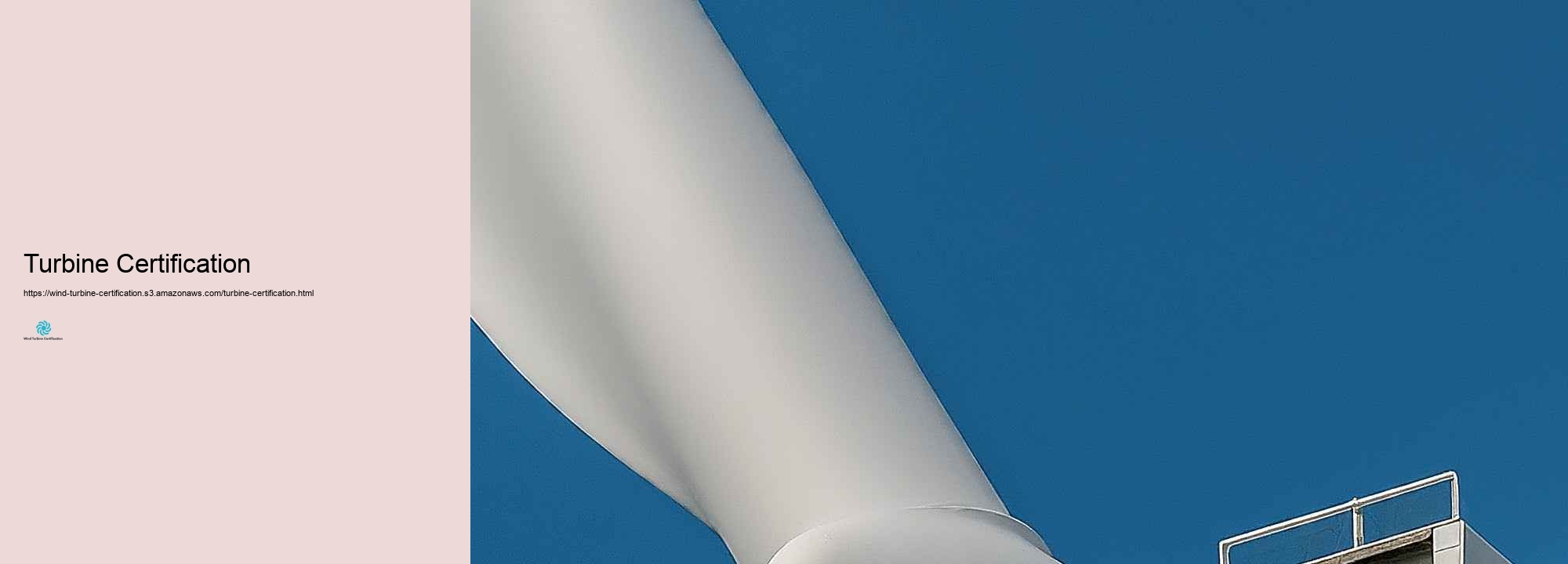
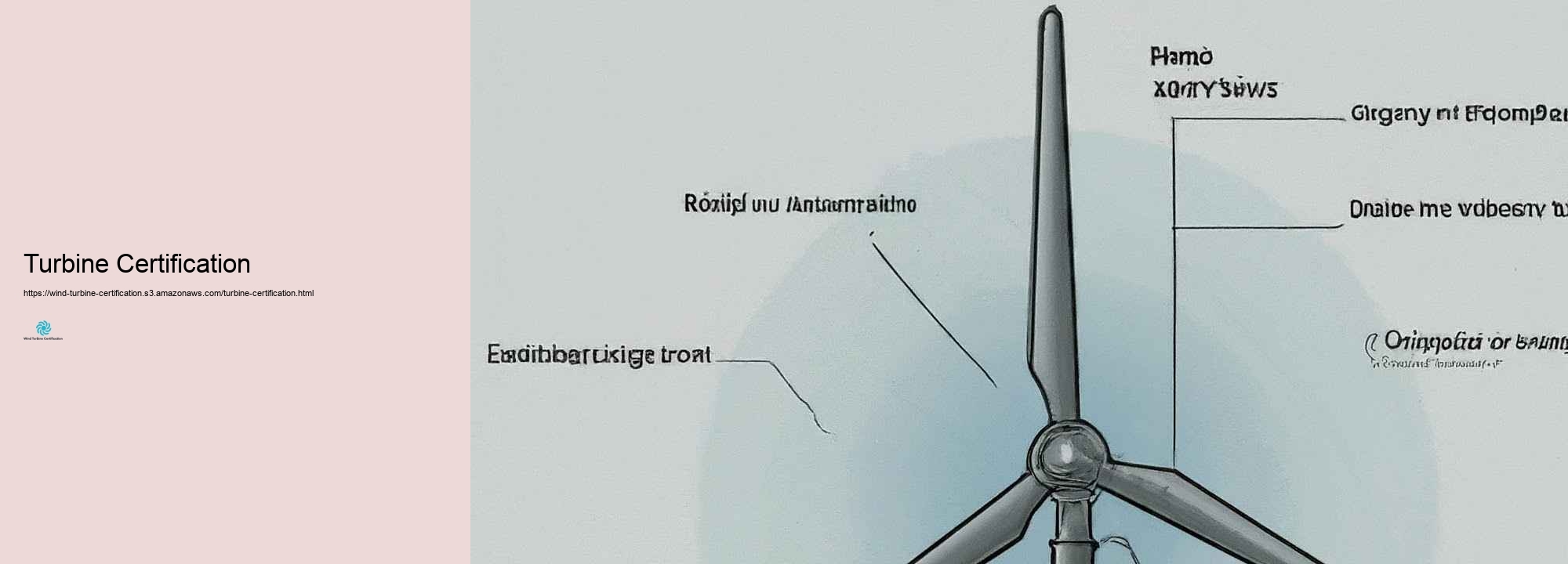
Wind turbine certification is a complete treatment that guarantees wind generators are developed, made, and examined to meet particular standards and demands. This certification is crucial for distributors to demonstrate the premium quality, safety, and efficiency of their things. The treatment usually requires various essential actions, each playing a vital obligation in the overall certification. The first step in the wind turbine certification procedure is the style basis assessment. This initial stage includes checking out the fundamental presumptions, criteria, and strategies taken advantage of in the turbine'' ' ' s design. Certification bodies like TUV, DNV-GL, or Bureau Veritas take a look at the format basis to assurance it aligns with sector standards such as IEC 61400-22. This step is essential as it collections the structure for all being successful evaluations and examinations. Complying with the design basis evaluation, the adhering to activity is the design assessment. In this stage, the certification body verifies that the genuine style of the wind turbine complies with the approved layout basis. This involves a detailed evaluation of all technological elements of the turbine, consisting of architectural aspects, electric systems, control systems, and security and safety qualities. The design evaluation guarantees that the turbine is theoretically with the ability of sustaining the anticipated loads and operating problems throughout its designated life time. The manufacturing evaluation is the Third major step in the certification treatment. This stage focuses on assessing the quality control systems and creating procedures utilized to generate the wind turbine. Certification bodies conduct assessments of creating facilities and check out high quality management systems to make certain that the wind generators are being produced frequently and based upon the certified style. This action is essential for preserving the honesty of the turbine from style to manufacturing. Kind screening is most likely the most extensive and visible component of the certification procedure. This action entails a collection of area and research laboratory examinations to validate the turbine's efficiency, safety and security, and dependability. Secret tests include power effectiveness measurements, lots dimensions, blade examinations, and acoustic audio analyses. These examinations are accomplished on a model of the wind turbine version under certification. The outcomes of these tests are important in verifying the design estimations and ensuring that the turbine executes as anticipated under various running issues. Component certification can be an additional step in the treatment, particularly for essential parts like transmissions, blades, or generators. This includes separate evaluating and certification of these elements, which can be especially vital for big or complex turbine styles. Element certification can assistance improve the total turbine certification procedure and provide extra warranty of integrity. The last assessment is the conclusion of all previous actions. In this phase, the certification body analyzes all the data, examination results, and evaluations from the earlier stages. They review whether all needs have been met and if any kind of sort of problems figured out throughout the procedure have'' been successfully attended to . If everything is adequate, the certification body issues the last kind certification for the wind turbine version. It's vital to remember that certification doesn ' ' t end with the issuance of the kind certification. Numerous certification systems consist of provisions for regular safety and re-certification. This guarantees that the made wind generators continue to be to fulfill the certified format and premium demands with time. Producers may demand to go through typical audits and potentially extra screening to maintain their certification. For wind ranch work, there's often an extra action of task certification. This consists of checking out just exactly how the recognized turbine models will certainly execute in the specific troubles of a prepared wind ranch internet site. Job certification takes into account components like local wind problems, terrain, grid connection needs, and structure designs. Throughout the certification treatment, clear interaction in between the turbine vendor and the certification body is essential. Routine meetings and growth evaluations aid make sure that any type of kind of troubles are recognized and addressed promptly, staying clear of delays in the certification timeline. Manufacturers needs to be prepared to provide significant documentation at each stage of the treatment. The timeline for wind turbine certification can vary considerably relying on the intricacy of the turbine design, the preparedness of the distributor, and the specific certification plan being followed. It's not uncommon for the entire process to take 12-18 months and even much longer for new or complex styles. Expenditures connected with certification can be significant, including costs for the certification body, costs of model. version production for evaluating, and expenses associated with the various examinations and examinations. Nevertheless, these expenses are usually viewed as a needed monetary investment in the wind power industry, as certification is generally a need for market accessibility, job moneying, and insurance policy. It's worth keeping in mind that various markets could have specific certification requirements. While international criteria like IEC 61400-22 are frequently acknowledged, some nations or areas may have extra or adjusted needs. Vendors going with international markets need to be educated about these variations and may need to get a number of qualifications. The certification procedure also plays a critical responsibility in the constant renovation of wind turbine innovation. The difficult evaluating and examination commonly cause understandings that drive development and enhance turbine performance and reliability. This cycle of certification and improvement has been a vital factor in the rapid renovation of wind power technology over the past decades. The wind turbine certification procedure is an in-depth, multi-step trip that makes certain wind turbines please high requirements of safety and security and security, efficiency, and reliability. From first design analysis with to final kind screening and certification, each action plays a crucial task in validating the turbine's capacities.
While the procedure can be time-consuming and costly, it provides crucial assurance to stakeholders in the wind power sector, from manufacturers and designers to capitalists and governing authorities. As wind energy continues to play a significantly necessary function in the globally power mix, the rigorous certification treatment keeps a structure of the industry advancement and success.
When it comes to wind turbine service technician accreditations, various credible companies offer programs that are thoroughly identified in the industry. These certification bodies play a vital function in developing and preserving criteria for wind turbine solution technicians, ensuring they have the essential capacities and proficiency to job safely and properly in this promptly increasing field. Among the most obvious certification bodies is the American Wind Power Company (AWEA). The AWEA deals a thorough Wind Turbine Specialist Certification program that is exceptionally regarded in the market. This certification covers a large variety of subjects, containing security treatments, electrical systems, mechanical systems, and hydraulics. The AWEA certification process generally requires completing a training program and passing a difficult evaluation. Many business in the wind power sector like or need professionals to hold this certification, making it a valuable credential for job innovation. An added well-respected certification body is the Global Wind Organisation (GWO). While not especially concentrated on specialist certification, the GWO establishes worldwide needs for safety and safety and security training in the wind field. Environmental Impact Assessment Their Basic Safety And Safety and security Training (BST) program is commonly acknowledged and often required by companies. It covers essential capabilities such as emergency treatment, fire understanding, running at heights, and sea survival (for offshore wind specialists). Lots of wind turbine specialists pursue GWO certifications in addition to their technological qualifications to enhance their employability and guarantee they please sector safety requirements. The Digital Tools Specialists Association (ETA) International is an additional organization that offers relevant accreditations for wind turbine specialists. Their Renewable resource Assimilation Expert certification is created for experts collaborating with different renewable resource systems, consisting of wind generators. This certification demonstrates a large understanding of renewable energy modern technologies and their assimilation right into electrical systems, which can be especially valuable for service specialists servicing grid web link and power flow elements of wind power jobs. The National Facility for Structure Education and Research Research study (NCCER) deals a Wind Turbine Maintenance Specialist certification program that is acquiring acknowledgment in the market. This program covers a complete series of skills and understanding areas specific to wind turbine upkeep, consisting of protection, electrical concept, hydraulics, and mechanical systems. The NCCER certification procedure involves both created analyses and practical performance analyses, making sure that certified specialists have both academic experience and hands-on abilities. For those wishing to focus on the offshore wind industry, the International Wind Organisation (GWO) deals specific certifications tailored to the distinct troubles of working with offshore wind ranches. These contain sophisticated rescue training and specialized sea survival training programs. While not solely for experts, these qualifications are commonly called for or highly valued for functions in overseas wind upkeep. The Work Safety and security And Safety and security and Health Management (OSHA) furthermore plays a significant obligation in wind turbine technician training and certification. While OSHA doesn't deal a specific wind turbine expert certification, their security training programs, specifically those pertaining to operating at elevations and electrical safety, are usually called for or recommended for service specialists in the area. Numerous employers need service professionals to hold OSHA certifications in addition to industry-specific credentials. In Europe, the European Wind Power Company (currently WindEurope )has contributed in producing requirements and certifications for the wind power market. While they wear 't directly deal solution specialist accreditations, their requirements and requirements frequently notify the material of training programs and qualifications given by various other organizations in Europe and beyond. The International Renewable Energy Firm (IRENA) is an additional global company that, while not making use of direct certifications, provides helpful resources and requirements for renewable energy experts, consisting of wind turbine solution specialists. Their operate in systematizing work obligations and skills demands throughout the renewable energy market has affected certification programs worldwide. It's worth noting that great deals of area colleges and technical establishments usage wind turbine professional training programs that finish in a certification or associate degree. While these are not qualifications in the typical really feeling, they frequently include prep work for industry-recognized certifications and can be an exceptional path right into the area. For those interested in an additional scholastic method, some colleges deal bachelor's degrees in renewable resource or wind power technology. These programs often consist of possibilities to gain sector qualifications as element of the educational program, providing graduates with both scholastic competence and practical credentials. When selecting a certification program, it's important for aiming wind turbine service specialists to take into account the recognition of the certification body within the sector, the specific capabilities and expertise areas covered by the certification, and the needs of prospective. feasible companies in their target work market. Several service specialists discover that a mix of qualifications from various bodies gives one of one of the most comprehensive credential plan. It's additionally critical to keep in mind that the wind energy sector is swiftly advancing, with new technologies and methods arising consistently. Thus, great deals of certification bodies offer continuing education and learning and finding out programs or need regular recertification to make sure that experts skills remain to be existing. This recurring understanding process is a required '' facet of a successful career in wind turbine upkeep. While there is no solitary, normally acknowledged certification body for wind turbine experts, various business deal highly pertained to programs that can significantly boost a professional qualifications and task leads. The American Wind Power Organization, Worldwide Wind Organisation, Electronics Technicians Association, and National Facility for Building And Construction Education And Discovering and Research are among the leading certification bodies in this location. Confident wind turbine experts needs to check into these organizations and their certification programs thoroughly, considering their job objectives and the details
demands of their target companies or areas. By acquiring accreditations from admired bodies and committing to ongoing education and learning and learning and ability growth, wind turbine professionals can setting themselves for success in this vibrant and growing market.
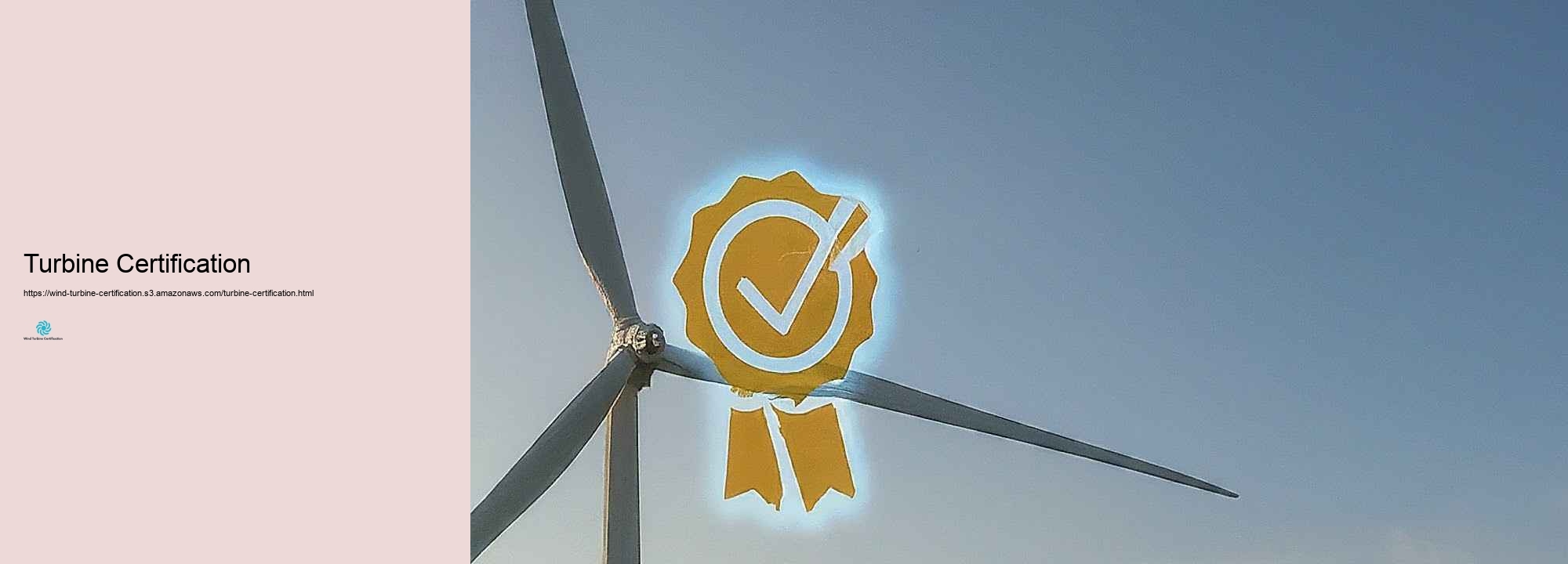
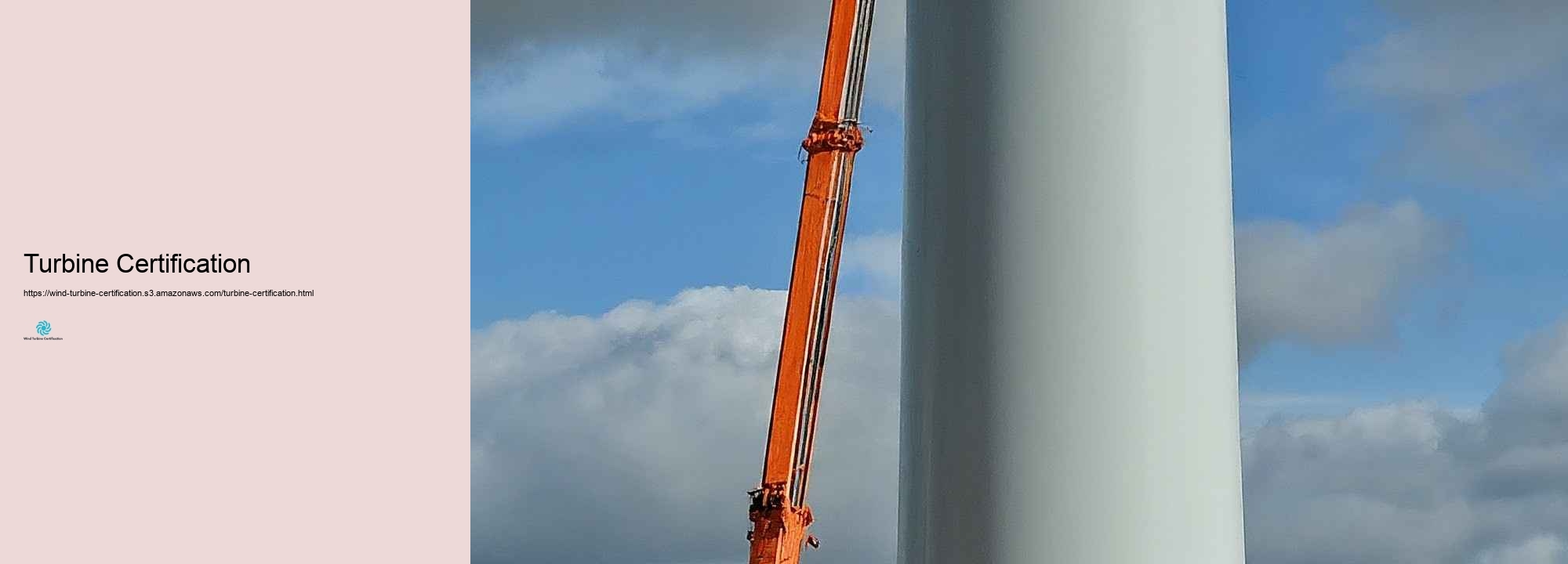
Wind turbine certification plays an important function in making certain the security and conformity of wind power systems, including significantly to the market growth and public authorization.
The wind energy industry has in fact expanded substantially over the previous couple of years, driven by the raising demand for renewable energy resources. As the industry boosts, the importance of making sure safety and security and security, dependability, and efficiency of wind turbines has actually come to be extremely crucial. International certification bodies play a crucial role in this procedure by establishing and applying requirements that ensure the top-notch and security of wind generators. This short article checks out the crucial around the world certification bodies associated with the wind energy industry and their duties in assuring conformity with international standards. The International Wind Organisation (GWO) is a charitable market organization developed by leading wind turbine manufacturers and motorists. GWO's vital unbiased is to accomplish an injury-free work environment in the wind turbine sector with the implementation of typical international requirements for safety training and emergency circumstance treatments. GWO criteria are created by the market, for the market, making sure that they are beneficial and efficient in enhancing protection and sustaining labor force development. GWO products many training requirements, including Essential Safety and security Training( BST), Fundamental Technical Training(BTT), and Advanced Rescue Training(ART ). These requirements are created to ensure that wind turbine experts have the required skills and recognizing to do their jobs safely and effectively. Certification bodies like NSF International Strategic Registrations (NSF-ISR) and ClassNK offer GWO certification to training suppliers, ensuring that they meet the called for demands and use correct tools in a correct setting. UL Solutions is an added preferred certification body in the wind power sector, determined globally for its understanding in safety science. UL Solutions gives credentials for overseas floating wind turbines, which are winding up being substantially crucial as the field moves in the direction of much deeper waters. Their certification options consist of kind certification, component certification, and grid code conformity certification. These certifications confirm that wind generators are established, recorded, and made in consistency with information standards and internet site troubles, seeing to it security, integrity, and performance. UL Solutions also deals turbine life development options, aiding owners make enlightened options concerning treatments, upkeep, and fixing to optimize the worth of running wind properties. Their participation in different nationwide and worldwide boards additionally emphasizes their dedication to developing the future of wind power with safer and extra secured innovation. ClassNK is a trusted certification body that supplies services based upon the international training requirements created by GWO. ClassNK usages certification for training service providers based upon all GWO training requirements, consisting of BST, BTT, ART, and specialized programs like Blade Repair solution Training. Qualified training business must take on annual monitoring audits and recertification audits every 2 years to preserve their certification. This considerable treatment ensures that training satisfies the best requirements, including in a much safer and a lot even more competent labor force in the wind turbine market. NSF-ISR is among the first North American certification bodies to supply GWO certification to training service providers.
top quality, and grid combination, these bodies market safety and security, dependability, and efficiency in wind generators. Their certifications boost market gain access to for manufacturers while maintaining manpower development via conventional training programs. As the wind power market continues to be to advance, the obligation of these certification bodies will certainly remain to be vital in driving technology and assuring that renewable resource modern innovations satisfy the biggest requirements of safety and protection and effectiveness.
Turbine Certification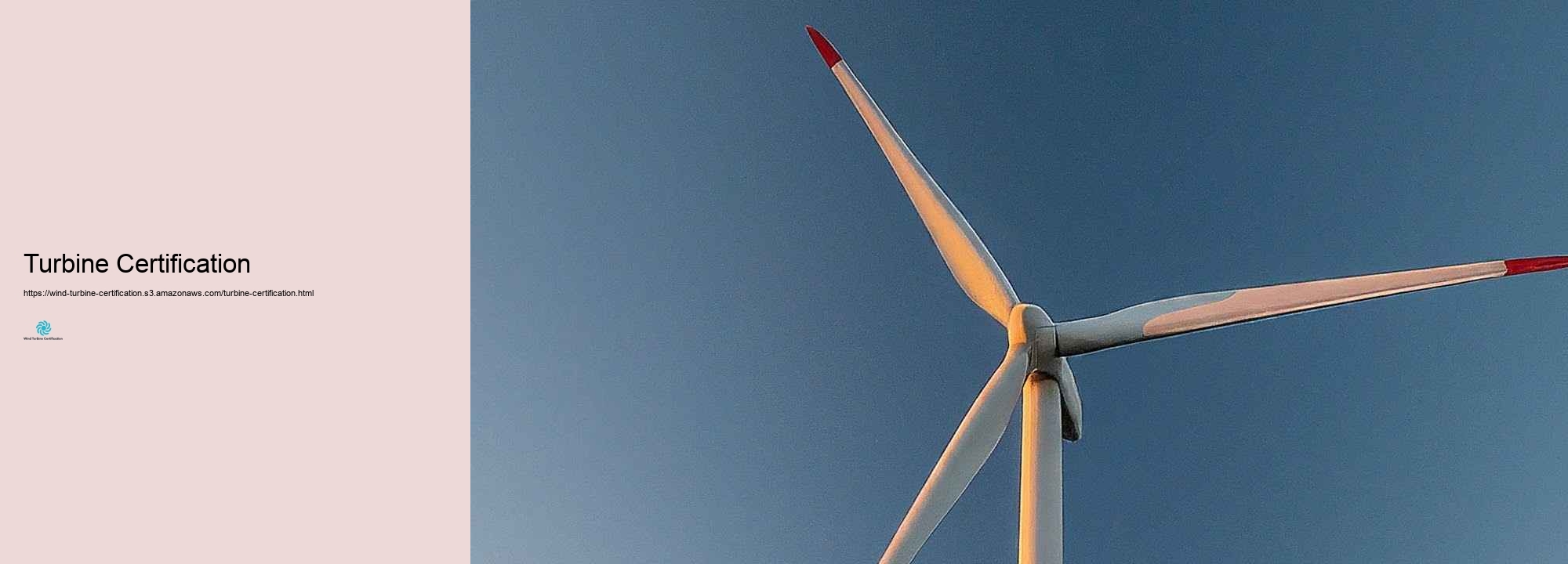
Wind Turbine Certification is a formal recognition that a technician or wind turbine system meets specific industry standards. It ensures safety, efficiency, and compliance with regulations, which is crucial for operating within the renewable energy sector.
Basic requirements include completing relevant training, gaining hands-on experience, and passing exams that test knowledge of wind turbine systems, safety protocols, and operational procedures.
The time required to become certified varies, typically ranging from a few months to over a year, depending on the program and the individual's prior experience.
Organizations such as the Global Wind Organisation (GWO), American Wind Energy Association (AWEA), and International Electrotechnical Commission (IEC) provide Wind Turbine Certification.
Obtaining Wind Turbine Certification enhances your credibility as a professional, opens up job opportunities in the wind energy sector, and ensures you are equipped to meet industry standards and safety requirements.